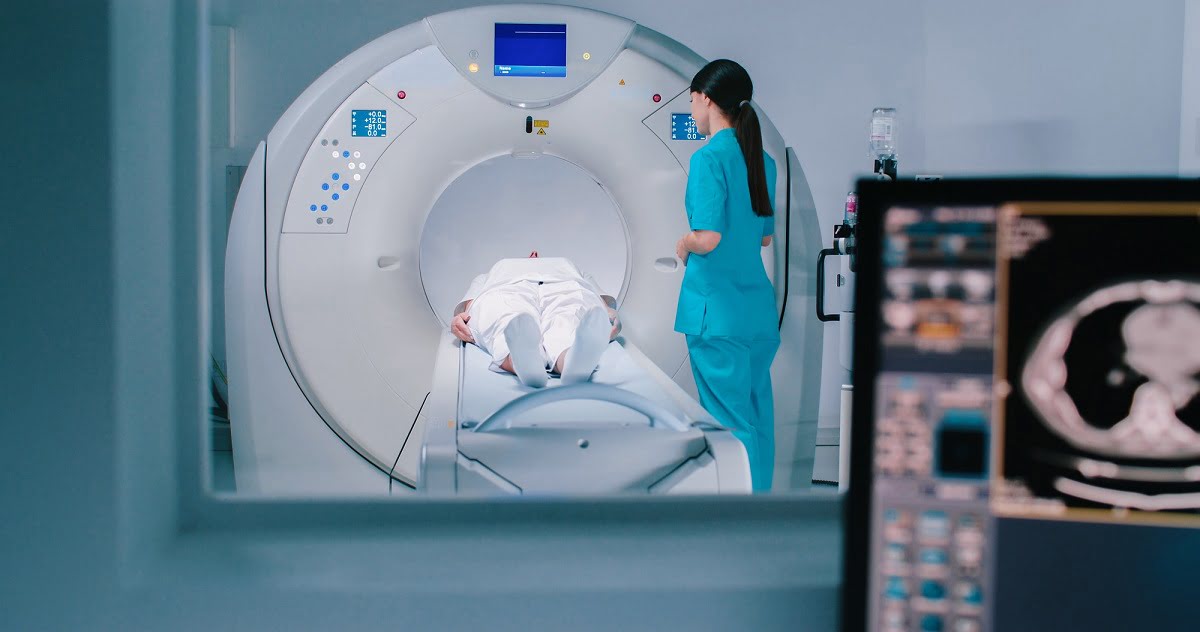Why is a CT Lower Abdomen (Including Pelvis) with Contrast Important?
This type of CT scan is a critical diagnostic tool in identifying a wide range of medical conditions. Here are some reasons why it is frequently recommended:
1. Enhanced Visualization of Organs and Blood Vessels:
The use of contrast dye improves the visibility of organs like the bladder, uterus, prostate, and lower intestines. It also highlights blood vessels, making it easier to identify issues like aneurysms, blood clots, or vascular blockages.
2. Detection and Evaluation of Tumors:
For suspected masses or tumors in the lower abdomen and pelvis, the contrast-enhanced scan provides a clear view of their size, shape, and location. It helps in differentiating between benign and malignant growths, aiding in the diagnosis of cancers such as ovarian, uterine, colorectal, and prostate cancer.
3. Diagnosis of Inflammatory and Infectious Conditions:
This scan is effective in identifying inflammatory diseases like appendicitis, diverticulitis, and pelvic inflammatory disease (PID). The contrast dye helps detect areas of inflammation, abscesses, or infections, providing valuable information for prompt treatment.
4. Evaluation of Abdominal Pain and Pelvic Discomfort:
For patients with unexplained lower abdominal or pelvic pain, this scan helps identify the underlying cause, such as kidney stones, urinary tract infections (UTIs), hernias, or bowel obstructions.
5. Assessment of Trauma and Injury:
In cases of physical trauma to the lower abdomen or pelvis, a CT scan with contrast can quickly reveal injuries to organs, internal bleeding, or fractures in the pelvic bones. It is an essential tool in emergency diagnostics and treatment planning.
How is the CT Scan Lower Abdomen (Including Pelvis) with Contrast Performed?
The process involves several key steps:
1. Preparation:
Fasting: Patients are usually advised to fast for 4 to 6 hours before the scan. This helps provide clearer images, especially if oral contrast is used. Allergy Check: It is important to inform the healthcare provider of any known allergies, especially to iodine or shellfish, as this may indicate sensitivity to the contrast dye. Hydration: Patients are encouraged to drink plenty of fluids before and after the scan to help flush the contrast dye from the body.
2. Administration of Contrast Dye:
The contrast dye may be administered intravenously or orally, depending on the area of concern. An IV injection is common for highlighting blood vessels and soft tissues, while oral contrast helps visualize the digestive tract.
3. Positioning and Scanning:
The patient lies on a motorized table, which slides into the CT scanner. The scanner is a large, circular machine that rotates around the patient, taking multiple X-ray images from various angles. The patient may be asked to hold their breath for short periods to prevent motion blur and ensure the clarity of images.
4. Imaging Process:
The scan typically takes about 15 to 30 minutes. The computer processes the collected X-ray data to create detailed, cross-sectional images of the lower abdomen and pelvis.
5. Post-Scan Care:
After the procedure, patients are advised to drink plenty of fluids to help eliminate the contrast dye from their system. Most patients can resume their normal activities immediately.
Who Should Consider a CT Scan of the Lower Abdomen (Including Pelvis) with Contrast?
This scan is recommended for patients presenting with specific symptoms or conditions:
1. Unexplained Abdominal or Pelvic Pain: When the cause of abdominal or pelvic pain is unclear, this scan can help identify issues like inflammation, infections, or structural abnormalities.
2. Suspected Tumors or Masses: For patients with a history of cancer or symptoms suggesting a pelvic mass, such as unexplained weight loss or changes in bowel habits, this scan helps in identifying and evaluating the extent of growth.
3. Evaluation of Trauma: In cases of blunt trauma from accidents or injuries, this scan is used to detect internal bleeding, organ damage, or fractures in the pelvic area.
4. Monitoring of Chronic Conditions: Patients with chronic conditions like inflammatory bowel disease (IBD), diverticulitis, or pelvic inflammatory disease may undergo this scan periodically to monitor the progression of the disease and evaluate treatment effectiveness.









